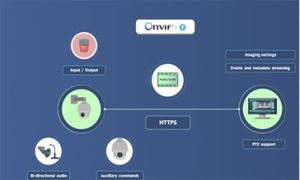
ONVIF, a global standardisation initiative for IP-based physical security products, is increasing its influence in the physical security market with the dual milestones of surpassing 25,000 conformant products and celebrating 15 years as an industry standard for interoperability.
The organisation points out that since its inception in 2008, products that conform to its profiles have consistently grown in number and scope, beginning with core products such as IP cameras, video management software, and network video recording solutions. Today’s database of conformant products includes intercoms, license plate recognition cameras, and can also include drones, and services such as video surveillance as a service (VSaaS), which ONVIF says is a reflection of both the value of video and the advantages of using cloud solutions.
“ONVIF has accomplished quite a lot in its first 15 years, but our work is certainly not done yet,” says Leo Levit, chairman, ONVIF Steering Committee. “As the industry continues to adopt video analytics, Artificial Intelligence, cloud and IoT, the role of ONVIF as a provider of standardised interfaces in these domains will only become more relevant.”
To support the industry in the important areas of video analytics and integration with IoT systems is the ONVIF Profile M specification, which standardises the handling of metadata and analytics events. Using the profile, systems integrators and end users can easily manage the exchange of metadata between system components from different manufacturers, such as cameras, video management systems and other software platforms. Profile M also provides compatibility with IoT systems with support for JSON-formatted events over MQTT, a common protocol for IoT applications.
In all, the industry organisation offers seven profiles, including Profile S for streaming video; Profile G for video recording and storage; Profile C for physical access control; Profile A for broader access control configuration; Profile T for advanced video streaming and Profile D for access control peripherals.
Products that conform to these profiles are produced only by ONVIF member companies and must support at least one ONVIF profile but can support multiple profiles for added functionality. The organisation emphasises that products must be registered under the ONVIF list of conformant products to be considered conformant.











